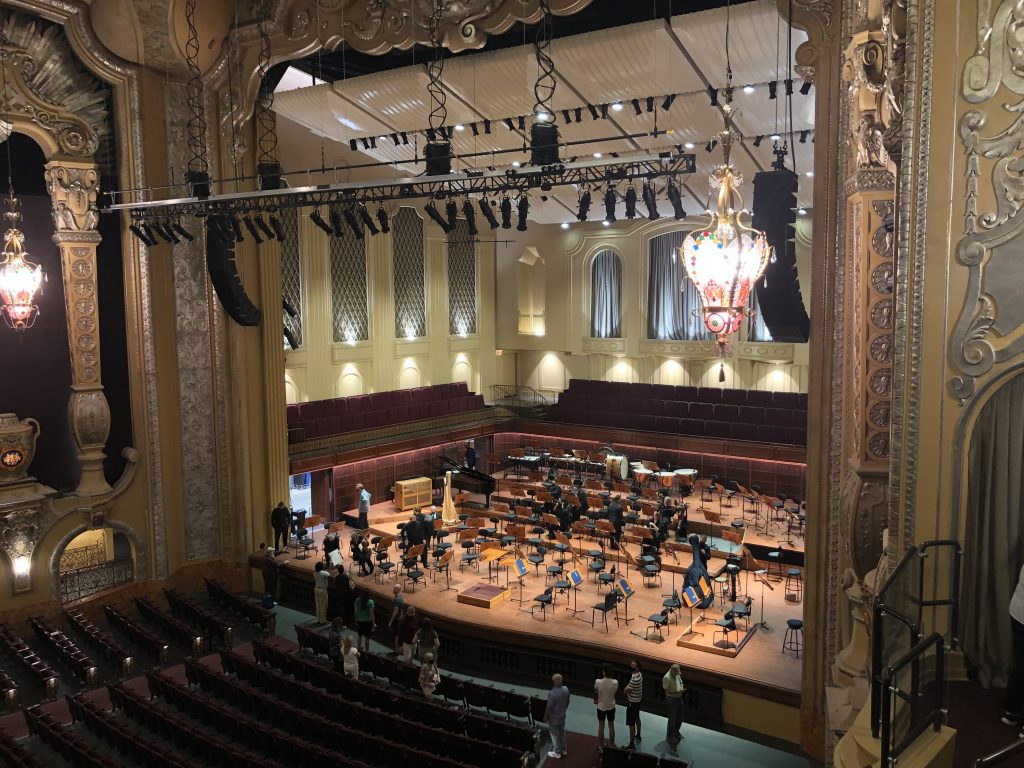Symphony Program Lacks Surprise
Setapen shines in Bolcom concerto, but five works programmed got repetitive, predictable.
While studying the music to be featured in this past weekend’s Milwaukee Symphony Orchestra (MSO) concert, I noticed that all but one piece was in the key of D major. Was this an accident or conscious planning? Always good to have some suspense. The program also suggested an exercise in Classical style, with Sergei Prokofiev and William Bolcom commenting on the style and Mozart and Haydn arriving later to provide archetypes.
Prokofiev’s “Classical” Symphony opened the concert with a nimble, festive mood enhanced by the Christmas trees and greens on the stage. This piece showed the composer leaning more consciously into his old-school Classical influences, with more occasional veering back to his personal language. The symphony breezed along: an opening Allegro with an almost unbearably cute second subject, a soul-warming Larghetto, a too-brief Gavotta, and then a Finale with all the Classical fun you could ask for. Strings scurried as in the best Mozart or Haydn finales, and the woodwinds had oomph.
Overall, Setapen gave a very selfless performance. It was all about beautiful sound, accuracy to the score, and communicating with the conductor — a testament to her years as a stellar team member and leader in the MSO, Frankly Music, and other settings. I was impressed with her as a soloist, and happy that she used her solo time in this engaging contemporary piece. I hope she gets to make more such appearances!
In the second half of the evening, Maestro Masur spoke briefly on the connection between the next chain of pieces. Something about the hall’s former use as a movie palace connecting it to the Schoenberg film music, the Mozart overture being from a stage work, and Haydn’s “Miracle” Symphony having to do with a mishap in a concert hall; a chandelier fell and no one was injured because they had crowded the stage. Good enough. The Mozart Overture from Idomeneo was fine, not terribly interesting to me. It led right into the Schoenberg, and that was interesting, but I didn’t buy the transition. The Schoenberg piece itself, Begleitungsmusik zu einer Lichtspielszene, started in ambivalence and then heated up with some kick. In the context of this program, it was like a dissonant ghost pepper hidden in a plate of wings in whatever sauce D major would translate to.
All told, this was a puzzling program. The concert felt long with two symphonies and a concerto and two other works. I was tired of D major and Classical style by the end. I wondered if swapping the two halves of the program, and choosing a Haydn symphony in another key, might have been more effective.
Review
-
Ouzo Café Is Classic Greek Fare
 May 23rd, 2024 by Cari Taylor-Carlson
May 23rd, 2024 by Cari Taylor-Carlson
-
‘The Treasurer’ a Darkly Funny Family Play
 Apr 29th, 2024 by Dominique Paul Noth
Apr 29th, 2024 by Dominique Paul Noth
-
Anmol Is All About the Spices
 Apr 28th, 2024 by Cari Taylor-Carlson
Apr 28th, 2024 by Cari Taylor-Carlson





















